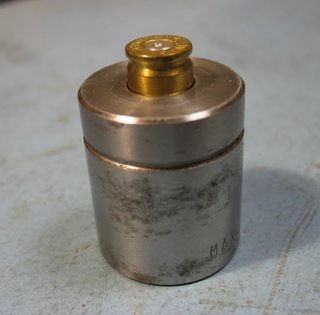ballman6711
Member
I can only wonder how much pressure it takes to shear off the bolt lugs.
chris
chris
I have loaded 9mm so hot 147gr bullets are super Sonic out of a 5 inch barrel and the cases didn't do that.One time I made the mistake of picking up brass after an action pistol match. At the next match some of my carefully crafted "Match" handloads wedged themselves solidly into the tapered chamber on my 9mm, thus ending that day's match for me. Later upon measuring these cases, it was discovered the case head had expanded just 0.002" at a position my dies couldn't reach. Those were the cases from the Open Class boys, and that's why they were left on the ground ! Lesson learned !!

So case head expansion is a real thing, but only in over-pressure scenarios. I agree with fxvr5. By the time you are expanding case heads, you are well into the Danger Zone... a place you shouldn't even be near. For the average shooter, "nothing good happens at Max Load". If you really want to know your chamber pressure, then buy a chronograph. For $100 you can get a very advanced chrono that will even send all the data to your phone.
Hope this helps.
Outside of some high-speed photography of the actual event, that paints a pretty good picture of what’s happening.Videos I am not sure about but I can provide a few images as they apply to rifle cases. Below are some 7mm-08 Remington cases I primed and fired in a 7-08 bolt gun. The cases were simply primed, no powder and no projectile means no real pressure to speak of. No cartridge head slamming into a bolt face, just a boring pop.
View attachment 1183963
Since there was not adequate pressure to violently slam the cartridge head into the breech face the primers are not flattened.
View attachment 1184076
Flat primers as a result of slamming back against the breech face.
Edit: The off center look of the second image is a result of poor camera angle.
Ron
I once took some primed (standard pistol primers) cases in 380 Auto with no bullet or powder. Loaded 6 into Bersa Thunder one at a time. Fired off 3 into the air. And the others I buried the muzzle into a pillow.Are there videos of this?
It won't!Edit, I wouldn't try the above in a revolver, as the cylinder may not swing out freely.
